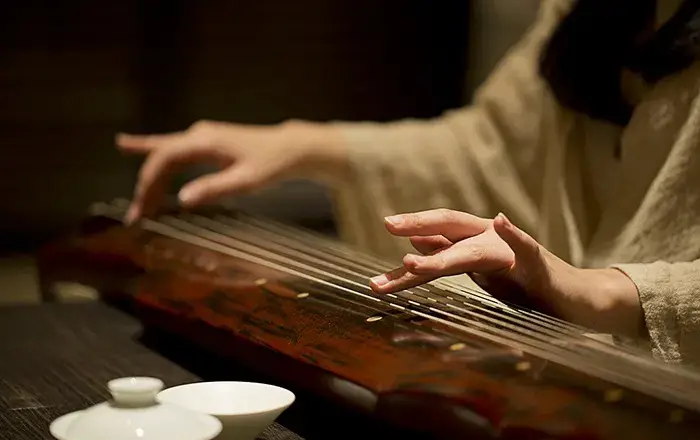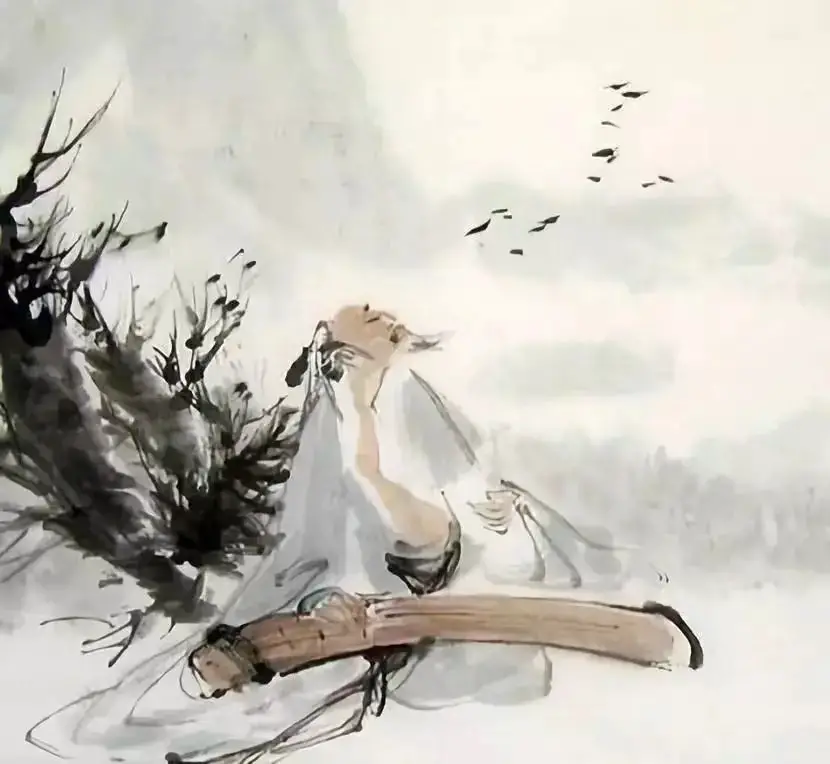The guqin is an essential part of China’s music history. The Chinese refer to playing a guqin as one of its four ancient arts. In the early 2000s, UNESCO identified guqin and its music as a World Cultural Heritage. A decade later, a guqin from the Song era sold for a whopping $22 million. This tag makes the guqin the most expensive musical instrument ever sold, but what makes it unique?
What Is A Guqin Instrument

A guqin is a seven-stringed Chinese instrument attached to a long narrow wooden sound box. A guqin is popularly known as a silent instrument because its open strings deliver a bass register with a range of four octaves that sound gentle and pure. Its genteel nature makes it ideal for solo performances only since its sound can’t compete with other instruments in an ensemble. The guqin is unique because its strings are longer than other Chinese instruments; it produces a tone-rich vibration that sounds like nature. It also has many overtones that players use for as many as a hundred harmonics.
When Was The Guqin Invented?
According to Chinese history, the first guqin was created 5000 years ago; this makes it the oldest musical instrument in China. The guqin stood the test of time and is now an essential part of China’s music culture.
Who Invented Guqin?
Although the origins of the first guqin are unclear, historians believe Huang Di, also known as the Yellow Emperor, his fellow ruler, Shennong, and a Chinese hero called Fuxi created it. However, several sources single out Fuxi as the guqin’s exclusive creator. Fuxi is known for his creativity in music, hunting, and writing.
What Is The Guqin Made Of?

Originally, the guqin had five strings as a sign of fire, earth, water, air, and wood elements until historians discovered emperors from the Zhou dynasty added two more as a symbol of two significant life events. Later, modern China unified the instrument’s concept and settled on its seven strings. Ancient guqin players attached twisted silk strings to the instrument’s box with pegs and goose feet that allowed them to tune it. Centuries later, modern players use steel strings wound with nylon, but music experts argue the material doesn’t refine the guqin’s tone. The Chinese also replaced the goose feet with a wrench.
Guqin strings are fitted along the bridge of a paulownia or China fir wooden box that measures 130cm long, 20cm wide, and 5cm high. These measurements translate to 3 Chinese feet and 6.5 Chinese inches to symbolize the 365 days in the Chinese calendar. The right side of the instrument’s edge also has 13 jade markers known as hui to represent each month of the Chinese calendar. The guqin’s base is catalpa wood with two holes on either side that produce its sound; the small hole is a dragon pond, while the big one is a phoenix pool.
What Is The Guqin Used For?
Ancient scholars used the guqin to interact and express themselves among their peers. Confucius later introduced the concept of playing the guqin for non-academic purposes. The Chinese used the instrument to play music in a Chinese ritual for religion and aristocracy called yayue, particularly in the Zhou dynasty. Due to the complexity of playing a guqin and its rarity, few artists can play it with dexterity. A handful of artists have achieved this fete in the modern world.
There are around 92 contemporary notable guqin players from the early 1900s and 3000 musical pieces since its invention. In 1977, Guan Pinghu, a famous guqin player, recorded a classic called the Flowing Water repertoire for a NASA space mission to send our world’s best music to space. The Chinese also uphold this culture in drawings and poetry that depict musicians playing the guqin. The instrument delivers an echo that blends Zheng, Qing, and He concepts from Confucius, Buddha, and Tao. These Chinese musical terms translate to purity, softness, and harmonics in that order.
How To Play Guqin
To produce sound on a guqin, you should pluck its open strands and stop strings to play different harmonics. It takes a mastery of fingering skills to play a guqin. You can perfect the art of plucking, sliding, picking, vibrating, and pushing the strings to deliver music on the guqin. These actions play a role in what the Chinese refer to as Guqin aesthetic elements of musicality. You can choose which movement works for your music.
For instance, some players believe sliding on the strings creates a distinct void that leaves the notes in a guqin’s musical piece to a listener’s imagination. These spaces in a guqin’s music allow players to connect with an audience. Notably, the sliding and other guqin techniques work best on silk strings. Players can refer to a written music notation to learn finger positions, tuning, and stroke techniques to achieve a pure sound. Once you master these skills, perhaps you can play the guqin’s famous repertoires; the High Mount and Flowing Water.
What Is The Difference Between Guqin And Qin?
A guqin and a qin are the same. Initially, ancient Chinese referred to the instrument as qin, but other musical devices had similar names, so they added the prefix gu– to differentiate it. For instance, a piano is called a gangqin, which sounds like qin. The prefix in guqin means ancient; it clarifies the instrument’s novel beginnings during the earliest civilizations. In a famous quote, ancient Chinese refers to the guqin as a qin that a gentleman should play because it symbolized refinement and subtlety.
Conclusion
A guqin is the first of the Four Chinese Arts because of its unique sound. The Chinese revere this instrument and the talent it takes to play it. The guqin’s structure is also a symbol of the construct of time in the Chinese calendar. Currently, there are countable guqin players and pieces despite its centuries-long existence. This rarity points to the exceptional nature of the guqin in Chinese culture.